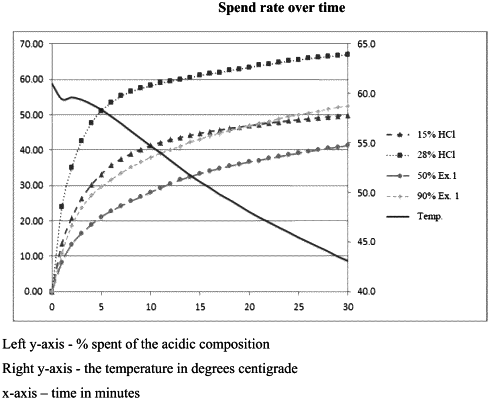| CPC C09K 8/52 (2013.01) [A23C 21/00 (2013.01); A23J 1/00 (2013.01); A23J 1/202 (2013.01); B01D 15/203 (2013.01); B01J 49/50 (2017.01); B01J 49/60 (2017.01); B08B 3/08 (2013.01); B09C 1/08 (2013.01); C02F 1/50 (2013.01); C02F 1/66 (2013.01); C04B 41/009 (2013.01); C04B 41/5315 (2013.01); C04B 41/5353 (2013.01); C04B 41/72 (2013.01); C05B 11/04 (2013.01); C05B 15/00 (2013.01); C05B 17/00 (2013.01); C05C 11/00 (2013.01); C05D 9/00 (2013.01); C05G 3/80 (2020.02); C05G 5/23 (2020.02); C09K 8/54 (2013.01); C09K 8/72 (2013.01); C09K 13/06 (2013.01); C09K 17/40 (2013.01); C09K 17/42 (2013.01); C09K 17/48 (2013.01); C11D 3/30 (2013.01); C11D 7/08 (2013.01); C11D 7/3218 (2013.01); C23F 11/04 (2013.01); C23F 11/142 (2013.01); E21B 37/06 (2013.01); C02F 5/125 (2013.01); C09K 2208/32 (2013.01)] | 7 Claims |

|
1. A method of use of an aqueous modified acid composition in the oil industry to stimulate production of a well, said method comprising: providing said aqueous modified acid composition that comprises a mineral acid and an alkanolamine in a molar ratio ranging from 3:1 to not more than 10:1 and having a pH of less than 1;
exposing a surface within the well, including a metal surface, to the aqueous modified acid composition;
allowing the aqueous modified acid composition a sufficient period of time to act upon said surface; and
optionally, removing the aqueous acid composition when the exposure time has been determined to be sufficient for stimulation.
|